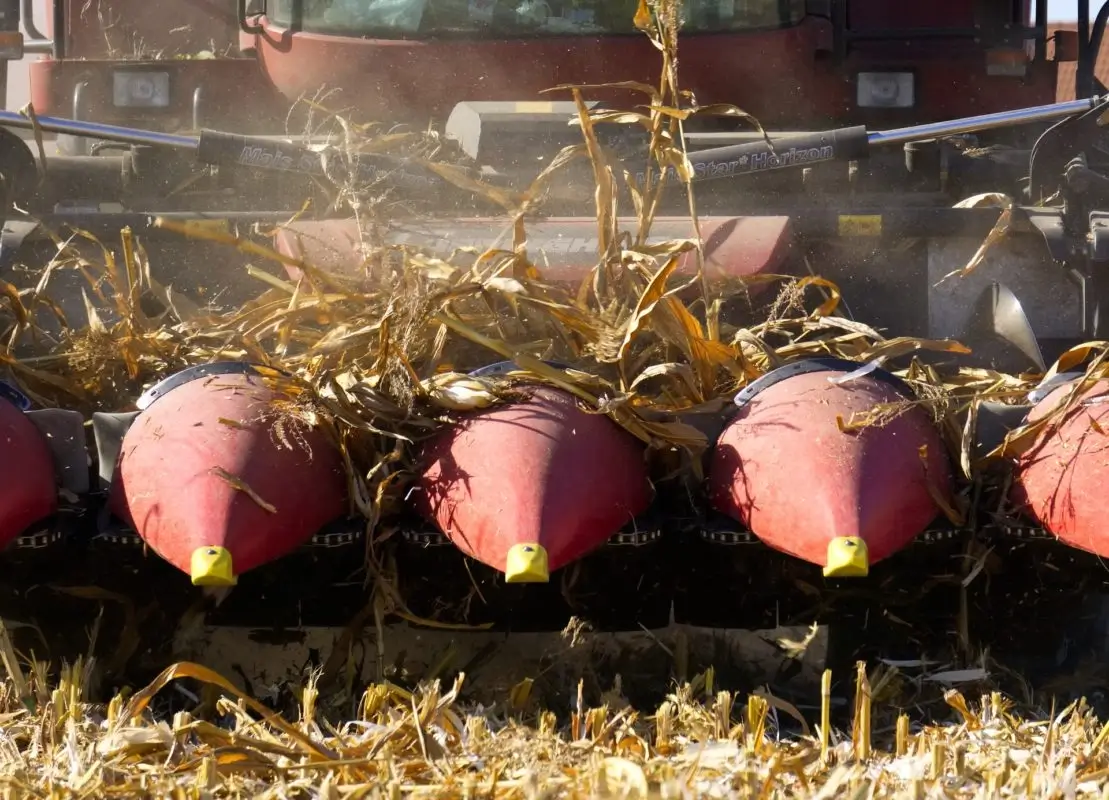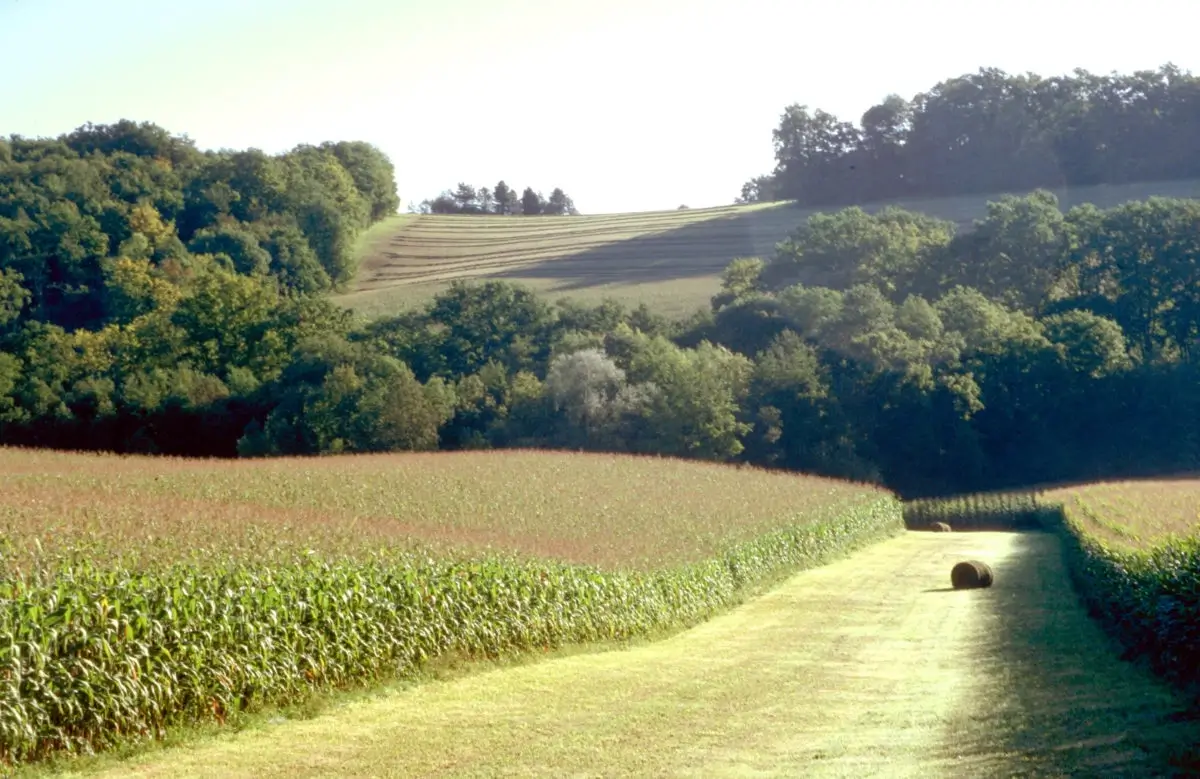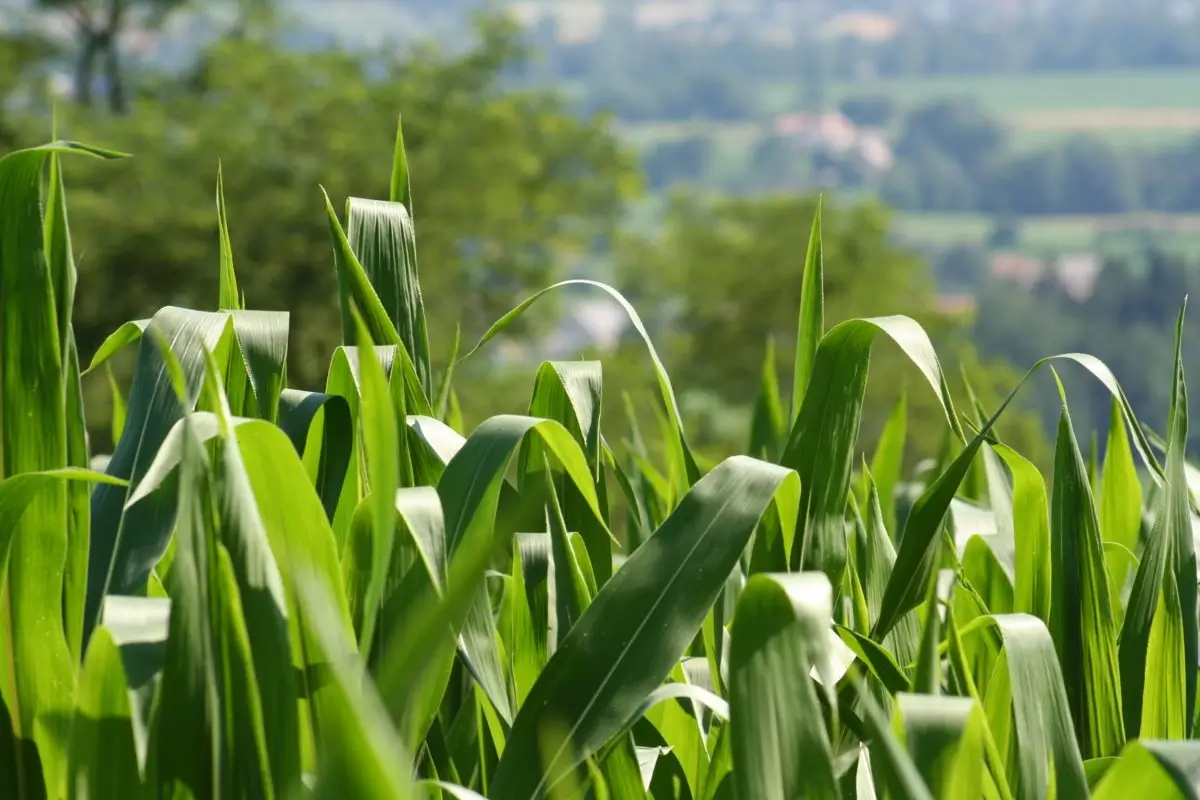Harvesting
In the case of grain maize, harvesting makes a major contribution to the quality of the grain sought by farmers and manufacturers. For fodder maize, it is also important to preserve as much of the nutritional quality as possible for the animals that will eat it.

Grain maturity
For farmers, the economic optimum is obviously the primary objective. It may be tempting to harvest the crop after the physiological maturity stage in order to save drying costs by taking advantage of the desiccation of the standing crop. This can be a good choice if the standing crop is not too unhealthy. This strategy implies the use of earlier varieties, which can limit yields.
In order to achieve the optimum, the following objectives should therefore be set:
– Pay attention to the general condition of the plant at the end of the cycle to determine whether it is advisable to wait until after the physiological maturity stage
– Observe the grain swelling up to the point when the kernel tip becomes black. This black tip corresponds to the end of the grain’s nutrient supply. In a warm year this marker is a good indicator of the harvesting date. This also means that the moisture content of the grain is less than 32%
– Sum of temperatures after female flowering. 800 degrees/day is a good indicator of the physiological maturity of the grain.
It is also vital to correctly adjust the threshing equipment in order to preserve crop quality. For early varieties, the concave clearance should be set at 30 mm at the entrance and 15 mm at the exit. For later varieties, the ears are larger, so the clearance should be increased by 5 to 10 mm.

Specific issues for fodder maize
5 rules to follow at the time of silaging so that the plant keeps all its nutritional qualities.
1. Choose your harvest date by observing the swelling of the grain. Aim for a whole plant moisture content of 32-33%. The three forms of starch (milky, pasty and vitreous) must be distributed in 3 equal parts in the grain of the ear’s central crown. Harvesting too early reduces the yield and the energy potential of the crop. Harvesting too late entails a risk of the fodder not keeping so well.
2. Controlling the chopping fineness. Chopping too fine makes the fodder easier to compact, but deprives the animals of sufficiently long strands for chewing. The following composition is therefore recommended:
– 40-50% very short strands (< 0.6 cm) – 30 to 40% short strands – 10-15% of average strands > 1 cm
– 0.5 to 1% long strands (> 2 cm)
3. Ensure the silo face moves back quickly enough (where losses are greatest). A suitable rate of advance is 10 cm/day in winter and 20 cm/day in summer.
4. Make sure there is no soil in the silo (a concrete floor is advisable, along with stable ground for machinery traffic).
5. Keep the silo well-compacted to avoid trapping air, as fermentation takes place in an anaerobic environment.

